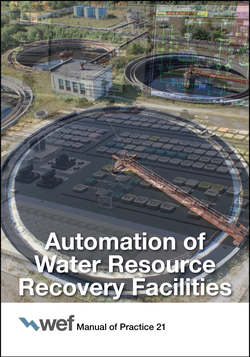Читать книгу Automation of Water Resource Recovery Facilities - Water Environment Federation - Страница 217
4.9.2 Artificial Neural Network Models Used for Process Modeling
ОглавлениеArtificial neural network models, both with and without feedback, can be used for process simulation. Figure 7.8 presents a schematic of the structure of the model without feedback. The input, u(t–n), is a vector of parameters at one or more past times. These parameters might include influent conditions such as flowrate and ammonia concentration and other measured values such as dissolved oxygen concentration and mixed liquor suspended solids concentration. The output, ŷ(t), is a vector of parameters at time, t, and might include ammonia and nitrate concentrations. Thus, the ANN model takes the inputs from past times and calculates the outputs for one time step ahead.
FIGURE 7.8 Artificial neural network model without feedback.
FIGURE 7.9 Artificial neural network model with feedback.
Figure 7.9 presents a schematic of the ANN model with feedback. In addition to the input vector, u, the model uses the value of the measured outputs at the past time period, y(t–1), as an input. The overall effect is that this type of model only needs to calculate the change in output parameters because it is constantly being updated with the most recent measured output information.
Determining what input parameters and what past time steps to use is part of model design. Some ANN packages include functionality to help determine which input parameters are significant. Insignificant inputs may be removed during the calibration procedure, which often leads to better forecasts.
